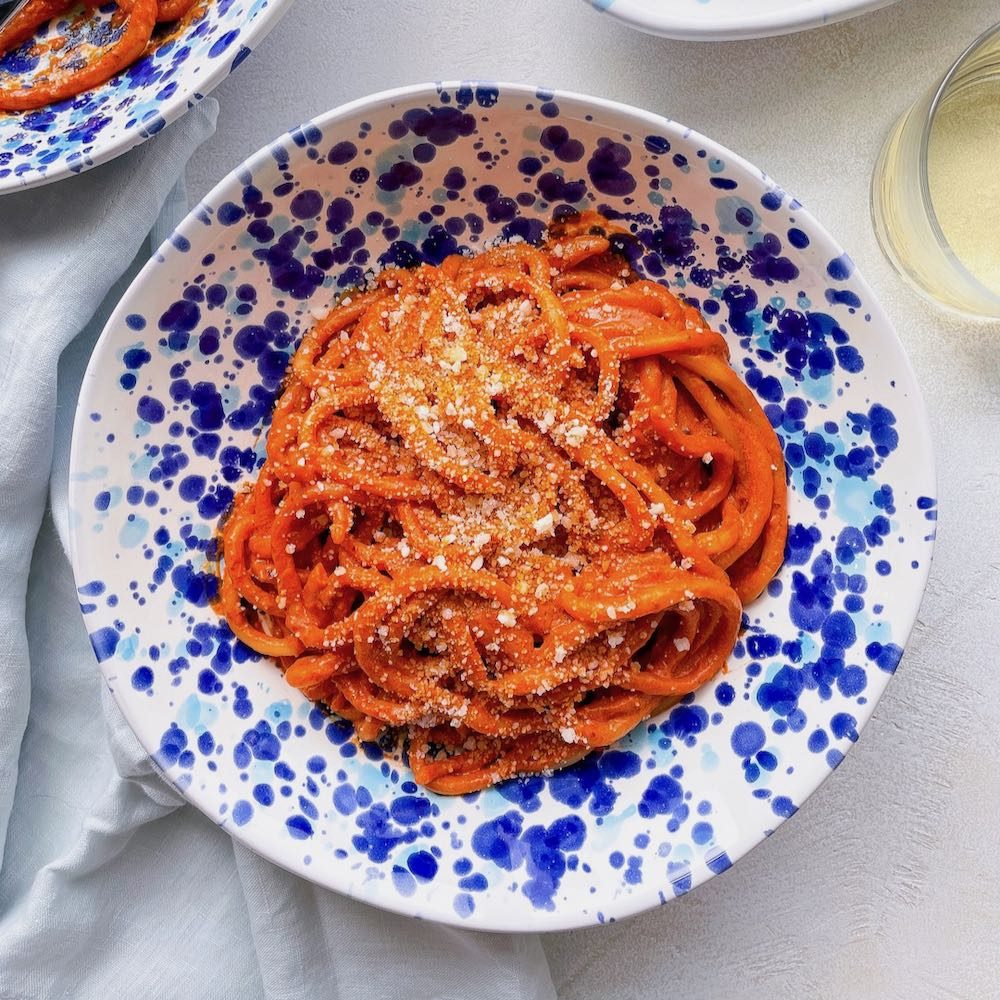
How Italian Cooking Inspires Less Waste in the Kitchen
Sarah from q.b. Cucina shares her favorite ways Italian cooking has inspired her to reduce waste in the kitchen
For centuries, Italians have been practicing the art of cucina povera, or “poor cooking,” – a traditional culinary approach born out of necessity, particularly prevalent in Southern Italy. It emphasizes simple, humble ingredients and thrifty cooking techniques to create flavorful dishes without extravagant or costly components. Staple ingredients include grains like pasta and bread, along with vegetables, legumes, and inexpensive cuts of meat or fish.
Despite its humble origins, cucina povera celebrates the creativity and resourcefulness of Italian home cooks, showcasing how delicious meals can be crafted from minimal resources. It also happens to be a naturally sustainable way of living, one that is almost effortlessly woven into Italian culture and life.
Here are a few ways you, too, can practice the art of cucina povera while simultaneously reducing waste in your kitchen:
- Reuse your pasta scraps. When you make homemade pasta, don’t throw away your scraps. Instead, freeze them and save them for your next batch of soup.
- Got stale bread? Turn it into breadcrumbs (known as pangrattato) to top off your pasta and salads with, or make crispy crostini that you can top with cheese, vegetables, or anything else from your garden.
- Go for DIY pasta over store-bought. While, yes, Italians do purchase store-bought boxed pasta, a good majority of them also make their own pasta at home. This not only is cost-efficient, but it avoids packaging waste and is tastier too. Fun fact: one standard kilo bag of pasta flour can be transformed into 16 servings of pasta!
- Turn your leftovers into ravioli filling. There are many traditional pasta dishes that were born out of the need to reuse leftovers. Take for example, agnolotti del plin, which turns the leftover meat from roasts into a delicious filling. Of course, it doesn't have to be meat: you can transform leftover fish, vegetables, and cheeses into pasta fillings too!
- Save those rinds. Whatever you do, don’t throw away your Parmesan cheese rinds! These precious layers can add a wonderful and robust flavor to your dishes. Simply save your rinds in your favorite Stasher bag in the fridge, then toss them into soups, broths, sauces, risotto, and more and let simmer to release its flavor. (Note: Although it is edible, you’ll probably want to discard the rind after it’s been cooked!)
I love how the time-honored tradition of cucina povera not only showcases the ingenuity of Italian home cooks but also serves as a beacon of sustainability in the culinary world. By celebrating simplicity and resourcefulness, this approach to cooking offers a fun (and often more flavorful) roadmap for reducing waste and maximizing the potential of every ingredient.

Leave a comment